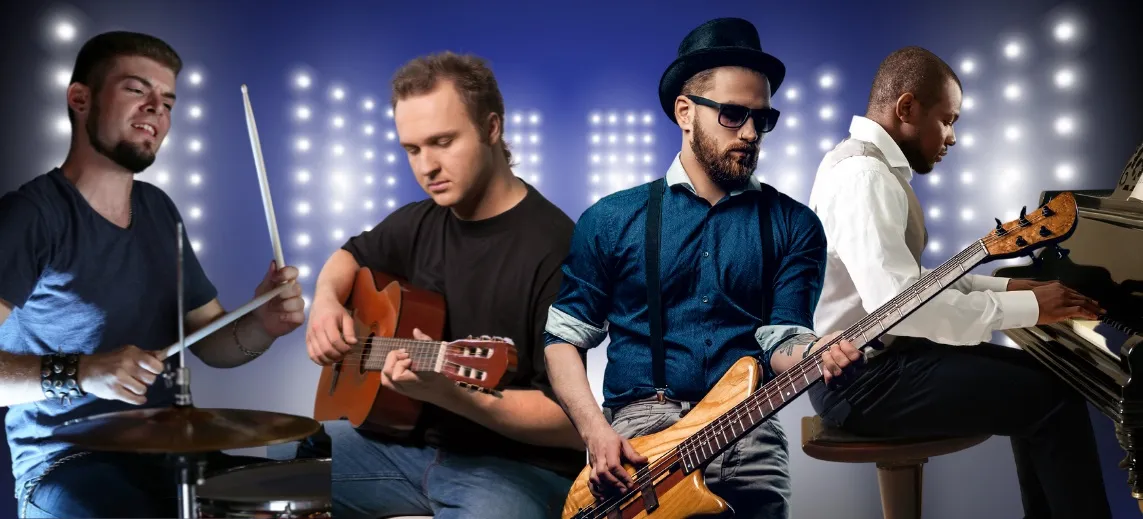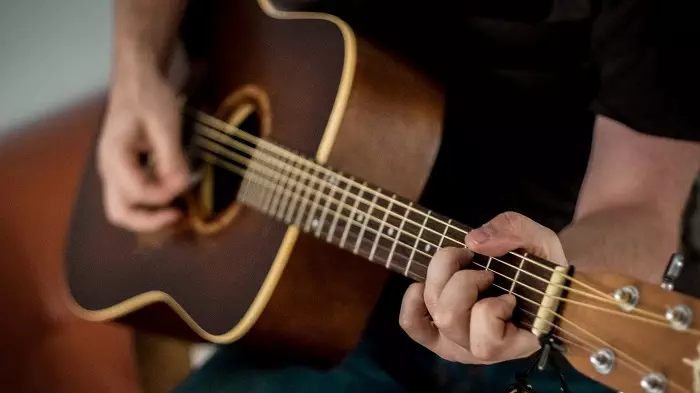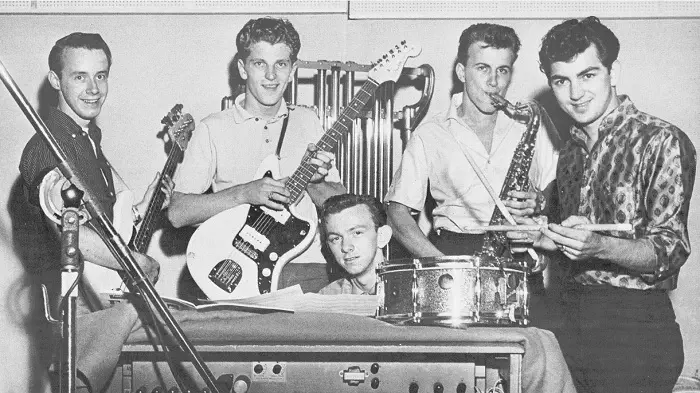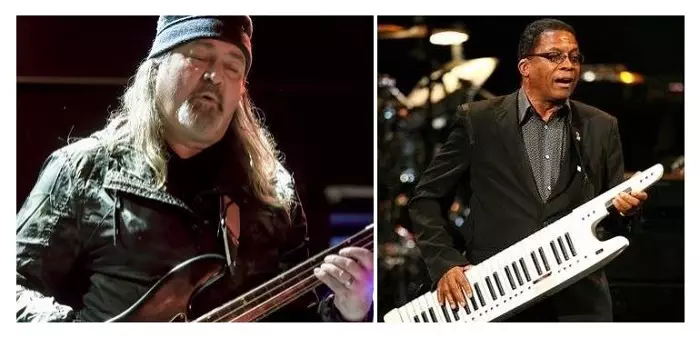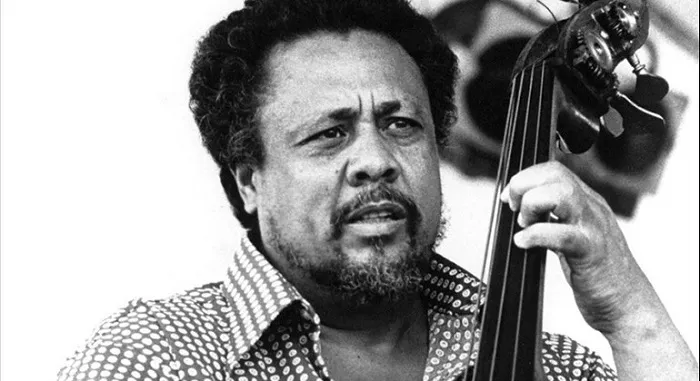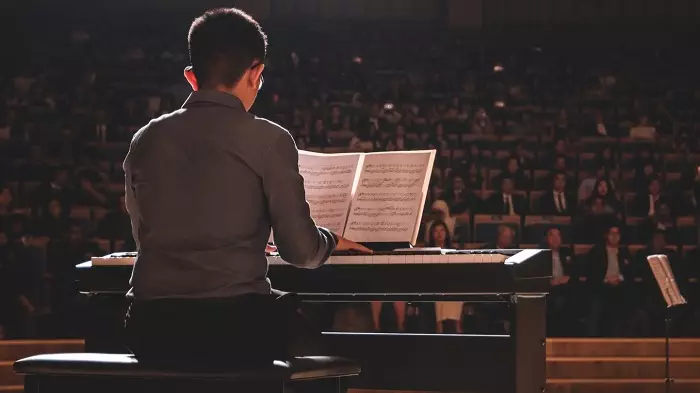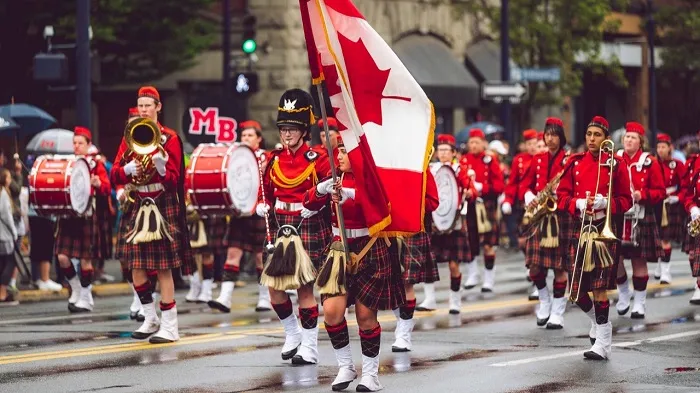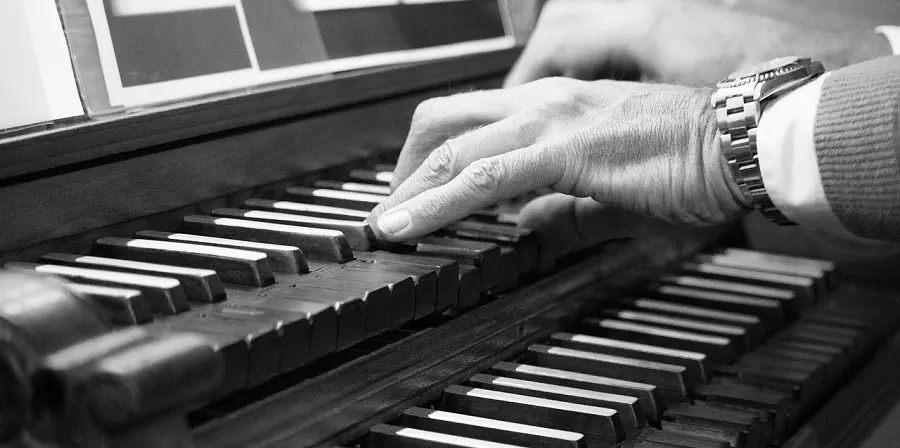To most people, Instrumental music is just the music they listen to in the background while studying, working, exercising, reading, or any other activity of the sort.
But did you know that Instrumental music is technically present in pretty much every song you’ve ever listened to or will listen to?
That’s right, Instrumental music is part of almost all music genres, from Hip-Hop to Classical to Rock. Its history is as old and rich as the music itself.
So if you’ve come across the term or you’re curious about it, I’m here to discuss the most common types of Instrumental music with examples to help make things clearer.
First, though, let’s get the definition of Instrumental music out of the way.
What is Instrumental Music?
Before we can jump into the different types of Instrumental music, it may be best to first explain what Instrumental music exactly is. So, what’s Instrumental music?
The Meaning of Instrumental Music
Instrumental music is simply music that doesn’t contain any words or vocals. Typically, Instrumental music includes just the sound(s) of one or more instruments being played.
However, sometimes small bits of inarticulate vocals can appear in a track of Instrumental music but they’re never meant to be the primary focus of the music piece. Instrumental music is made – mainly or exclusively – by using musical instruments. There should be no audible lyrics featured in it.
The composition of Instrumental music can involve one musical instrument or a group of different musical instruments such as drums, guitar, and piano. Instrumental music can also be created using a variety of music production software.
Like I said above, an Instrumental music piece is normally recorded without the use of any vocals, but it might still contain lyrics in some cases, such as backup vocals that are shouted in a large band setting. The word “song” itself has developed a broader sense via semantic widening and may refer to Instrumental music on its own.
Forms of Instrumental Music
An Instrumental music piece can exist in the following forms:
- After the composer has written it in music notation.
- In the mind of the musician or the composer. This is especially true in instances where the composer/musician will perform the Instrumental music piece themselves. For example, a fiddle player in Folk music or a solo guitarist in Blues music.
- As a workpiece that one instrumentalist or a single musical ensemble performs live. The components of an Instrumental piece played by an ensemble can range from two or three instruments to a large band, a concert band, or even a full-blown orchestra.
Instrumental Sections
Other than pieces that exclusively or mainly feature Instrumental music, Instrumental music is also used in songs that are conventionally sung. The section that’s not sung or vocalized but instead played only by instruments is often referred to as an instrumental interlude.
If the instrumental section is played before the singer begins singing at the start of the song, it’s called an instrumental introduction. If the instrument section is created by percussion instruments, it’s usually called a percussion break or percussion interlude because they take the form of a “break” from vocals in the song.
Additionally, if the instrumental section aims to emphasize or put the spotlight on the skill or musical ability of an instrumentalist, it’s then referred to as a solo. For example, Hard Rock music or Heavy Metal songs feature one or more guitar solos as an integral section of the workpiece.
Types of Instrumental Music
Now that you understand the basic idea – which is that Instrumental music is a music piece that’s intended to be mainly or exclusively played by a single instrument or a group of instruments – it’s time we move onto the core of today’s article; the types of Instrumental music.
As Instrumental music is mostly free of vocals, its genres are as many as the genres of music itself. This is why no one can possibly list every single type of Instrumental music. That said, the 5 most common types of Instrumental music are:
- Instrumental Rock
- Instrumental Hip Hop
- Instrumental Jazz
- Classical Music
- Marching Band
1. Instrumental Rock
Instrumental Rock is a type of Rock music where the use of musical instruments is heavily highlighted and contains little to no vocals/singing.
If you want to find examples of Instrumental Rock, just listen to practically any Rock subgenre. There’s even a great chance that you’ll come across musicians whose specialty is this style.
History and Examples of Instrumental Rock
The popularity of Instrumental Rock hit its all-time peak between the 1950s and the 1960s, prior to the British (music) Invasion. Artists of the era included names such as The Shadows, Bill Doggett Combo (Honky Tonk), Johnny and the Hurricanes, The Fireballs, The Spotnicks, and The Ventures.
Hit Instrumental Rock songs could spotlight the electronic organ (such as Red River Rock by Johnny and the Hurricanes), or the saxophone (such as Tequila by the Champs), but the most prominent instrument was the guitar.
Duane Eddy was the first artist to release a stereo Rock ‘n’ Roll album, and he has several hits such as the famous Rebel Rouser.
The Fireballs pioneered the bass/drums/guitar/guitar/ band configuration, leading the way for artists such as The Shadows and The Ventures.
In August 1964, one of the very first recorded Rock guitar jam sessions was released by Checker Records in the album Two Great Guitars performed by Bo Diddley and Chuck Berry. From this point, let’s have a look at the highlights of Instrumental Rock over the years:
The 1970s:
- The Allman Brothers’ albums Jessica and In Memory of Elizabeth Reed.
- Jeff Beck recorded and released Blow by Blow and Wired.
- King Crimson created explosive instrumentals that combined Rock, Heavy Metal, Jazz, and Classical styles.
- Mike Oldfield’s best-selling Instrumental album Tubular Bells.
- Camel’s The Snow Goose.
- Many of the early compositions by Pink Floyd were mainly Instrumental music pieces and blended Psychedelic, Space, and Progressive Rock.
The 1980s:
- Guitar soloists dominated the Instrumental Rock scene such as Yngwie Malmsteen, Joe Satriani, Steve Vai, Jason Becker, and Pepeu Gomes.
The 1990s:
- Steve Vai’s Passion and Warfare served as a technical breakthrough when it came to the boundaries of guitar composition and performance.
- Michael Angelo Batio’s No Boundaries.
- The soundtrack of Quentin Tarantino’s Pulp Fiction featured lots of Rock instrumentals.
The 2000s:
- More Instrumental Rock albums and tours by artists such as Marty Friedman, Steve Morse, Ron Jarzombek, Paul Gilbert, and Joe Satriani, who have continued releasing Instrumental Rock music and touring with success.
- John Lowery’s solo instrumental rock albums Vertigo, Songs for Sanity, and The Devil Knows My Name.
- Instrumental Post-Rock bands such as Do Make Say Think, Godspeed You! Black Emperor, Austin TV, Mogwai, the Mercury Program, Russian Circles, 65daysofstatic, and Explosions in the Sky.
2. Instrumental Hip-Hop
Instrumental Hip-Hop is a type of Hip-Hop music that contains no words or vocals. Once again, it relies exclusively or primarily on music played by instruments rather than singers.
As a rule of thumb, there are two major elements forming Hip-Hop:
- The beat, which is the instrumental portion of the track that delivers a harmonic and rhythmic base and supports the lyrics.
- The vocalist or the rap, which is the vocal portion of the track that tells a certain story using a rhythm of lyrics and generating an intriguing vibe with their tone.
The artist who makes the vocal portion is called the emcee (MC), whereas the artist who makes the instrumental portion is called the producer (beatmaker). The MC, in this format, is the primary focus of the piece as they’re responsible for providing the majority of the song’s variation and complexity over a beat that’s somewhat repetitive.
On the other hand, Instrumental Hip-Hop is the music section of Hip-Hop minus the rapping of an MC. In this format, the producer has the main role and gets plenty of flexibility to craft instrumentals with more complexity, richer details, and varied techniques.
Since instruments are no longer forced to keep a steady beat for the vocalist, songs in Instrumental Hip-Hop may not stick to the core style and are likely to explore various musical eras and incorporate different subgenres.
History and Examples of Instrumental Hip-Hop
Many producers have tried the Instrumental Hip-Hop approach, releasing Hip-Hop tracks with just the beats and no MCs, however, these records didn’t receive much welcome and rarely ended up becoming popular. Notable exceptions include the collaborations between Herbie Hancock (composer/keyboardist) and Bill Laswell (producer/bassist).
In 1983, Future Shock’s Rockit (hit single and album) featured Grand Mixer D.ST, who was a turntablist. This marks the first time a Jazz fusion used turntables and paved the road for the wide exposure of record “scratching” and turntablism.
In 1996, DJ Shadow released the debut album “Endtroducing…..” which witnesses the start of a movement in Instrumental Hip-Hop that relied mostly on a mixture of Hip-Hop, sampled Funk, and film score.
The 2000s and 2010s saw artists such as MF DOOM, RJD2, Madlib, J Dilla, Wax Tailor, Pete Rock, Nujabes, Damu the Fudgemunk, Large ProfessorDJ Krush, and Blockhead receive critical acclaim for their entirely Instrumental Hip-Hop albums.
3. Instrumental Jazz
Jazz, as a music genre already doesn’t depend much on lead vocalists compared to other popular genres of music. In fact, Jazz is pretty much all about the sound of the instruments.
Instrumental Jazz is therefore simply the majority of Jazz music. It features (often improvised) tunes played on a variety of instruments and aims to invoke a wide spectrum of emotions, ranging from sorrow to glee.
Instrumental Jazz heavily relies on the ability of the instrumentalists to skillfully introduce changes in beat, tempo, and texture throughout the song. One of the special techniques that commonly appear in Instrumental Jazz music is named “call-and-response”, where one player/instrument replies to another instrument.
The Instrumental Jazz music genre involves dozens upon dozens of subgenres. This is because Jazz intersects with so many different music styles and genres, from Rock to Funk to Blues to Classical, which caused tons of Jazz subgenres to emerge.
As you can imagine, pinpointing an exact set of characteristics for Instrumental Jazz can be tricky. However, they can be summed up in three terms:
- unique rhythms.
- harmonic refinement.
- improvisation.
Commonly Used Instruments in Instrumental Jazz
A very intriguing aspect of Instrumental Jazz is that its ensembles can feature almost any instrument you can think of as long as it allows enough improvising room for the player. Here are a few of the most commonly used instruments in Instrumental Jazz:
- Bass – an Instrumental Jazz band rarely doesn’t include either bass or double bass guitar. Renowned artists here include Charles Mingus, Ray Brown, Dave Holland, and Gary Peacock.
- Drums – the rhythm section of a Jazz band is built around the drums as its heart. Great artists here include Art Blakey, Billy Cobham, and Max Roach.
- Keyboard – a keyboard in a Jazz band can mean either a piano or a digital keyboard, which is a standard presence in any Instrumental ensemble. Famous artists here include Thelonious Monk, Jason Moran, Keith Jarrett, Bud Powell, Herbie Hancock, and Bill Evans.
- Guitar – this is the most commonly used stringed instrument in a Jazz ensemble, and it’s generally second to the keyboard. Iconic artists here include Pat Metheny, Charlie Christian, Joe Pass, Mike Stern, and Wes Montgomery.
4. Classical Music
The term “Classical music” usually refers to the formal department of Western music, differentiating it from Western Folk or Pop music. The history of Classical music is commonly divided into 7 distinct periods in the following order:
- Early Music
- Renaissance
- Baroque
- Classical
- Romantic
- 20th Century
- Modern/Contemporary
The majority of the instruments that are frequently used in Classical music works were invented many years before the mid-1800s and were systemized between the 1700s and 1800s. Examples of such instruments are the ones featured in orchestras and solo instruments like the piano, organ, and harpsichord.
Instrumental Forms of Classical Music
The following forms of Classical music don’t typically involve a vocalist and depend exclusively on instruments:
- Concerto – here, a soloist (usually a pianist, cellist, or violinist) sort of plays “against” the rest of the instruments in the orchestra. The goal of this configuration is to highlight both the soloist’s and the orchestra’s skills, separately and as a group.
- Cadenza – this is a section where the soloist gets a chance to show off their abilities individually. The cadenza occurs at the end of single or multiple movements.
- Movement – most of the works of Classical music are divided into chapters called movements. The conventional pace of a movement is fast/slow/fast, as in the case of a sonata or a symphony.
- Sonata – when a musical piece is composed to be played by a solo instrument, it’s referred to as a sonata. Typically, this particular instrument is a piano. Even if the sonata isn’t intended to be played by the piano alone, then the piano will accompany that instrument, as well. A sonata is usually made up of 3 or 4 movements, with tons of notes to remember.
- Orchestra/Symphony – although it can be challenging to explain this form of Classical music, I can simply say that a symphony/orchestra is what you call an ensemble of multiple players of various instruments including wind, brass, percussion, and string.
5. Marching Band
Last but not least, the final type of Instrumental music we’re discussing today is marching band. So what’s a marching band? It’s a group of instrumentalists who typically play in outdoor performances.
Along with the musical component of the band, these performances also include special types of movements such as marching – hence, the name. The instruments used in marching bands typically include woodwinds, brass, and percussion instruments.
The created music is often characterized by a strong rhythmic element that’s suitable for intense marching. Additionally, all marching bands wear some sort of uniform.
Marching bands don’t just participate in traditional parades, but many of them also perform at competitions and field shows at sports events (for example, football games).
The oldest military band in the world is the Ottoman Military Band, formed in the 13th Century. Marching bands had declined in popularity by the 20th Century, yet the fall of the Ottoman Empire saw a reboot of the Instrumental marching band tradition.
Marching bands also influenced European Classical music. Famous composers like Wolfgang Amadeus Mozart, Ludwig van Beethoven, and Joseph Haydn were inspired to imitate marching band music in their compositions.
In more modern times, musicians such as Beyoncé, Kanye West, CeeLo, and a large number of Jazz artists like Louis Armstrong and Joe “King” Oliver were influenced by marching bands.
Styles of Marching Bands
Marching bands are classified into five different styles based on their main function, technique, and instrumentation:
- Military – historically, this was the first type of marching band where the instrumentation generally featured woodwinds, brass, and percussion. Attributing to its original goal, military marching bands normally march forward in straight lines. The oldest American military band is the U.S. Marine Band, who were established in 1798.
- Corps – a competitive band format where ensembles are judged in several categories including visuals, colors, music, percussion, bass, and general effect. Formed in 1878, the Ohio State University Marching Band (nicknamed “The Best Damn Band in the Land” or simply TBDBITL), is one of the largest percussion and all-brass bands globally.
- Traditional – also referred to as show bands, traditional marching bands are structured and designed mainly to entertain the crowds and put on performances on football fields. The oldest traditional show band in US college history is the University of Notre Dame’s Band of the Fighting Irish, who were formed in 1845.
- Carnival – United Kingdom’s version of show bands. Typically, they march to music and perform in competitions and parades. However, there are many Carnival marching bands around the world, including Brazil’s Galo da Madrugada, which was formed in 1978 and is considered to be the world’s largest Carnival block, according to the Guinness World Records.
- Scramble – are also known as “scatter” bands, a sort of disorganized marching band that doesn’t march to the timing in music. Instead, they change their formation from one design to the next, and may also include comedic elements as part of their show. The oldest Scatter marching band in the Ivy League is the Dartmouth College Marching Band, which was formed during the 1889 football season.
What is Instrumental Music: Conclusion
Instrumental music is any music that does not feature vocals as the primary focus. It encompasses a wide range of genres, including Classical, Jazz, Electronic, and more.
Instrumental music can be further categorized into different types, such as solo instrumental, ensemble, and orchestral. Solo instrumental music features a single performer, while ensemble music involves a group of musicians playing together. Orchestral music is performed by a large group of instrumentalists, including strings, brass, woodwinds, and percussion.
Instrumental music can serve various purposes, from entertainment and relaxation to film scoring and background music. It allows the instruments to take center stage and showcase their unique tonal qualities and expressive capabilities.
